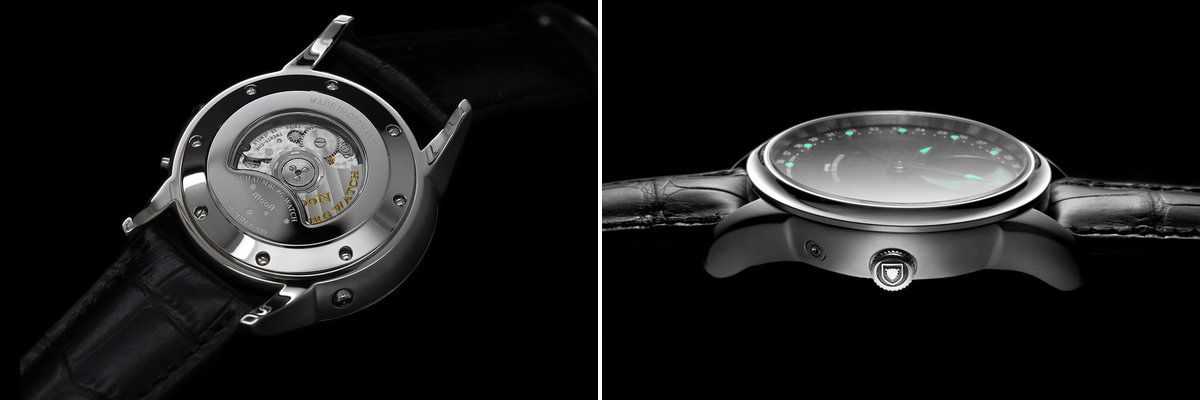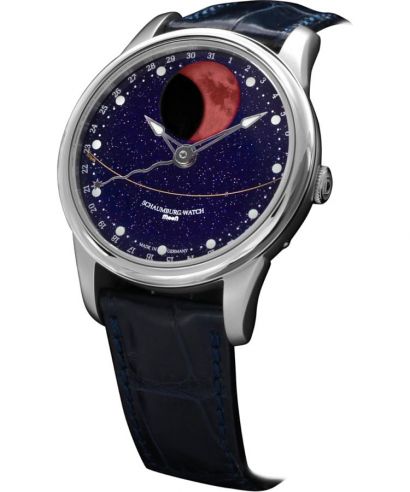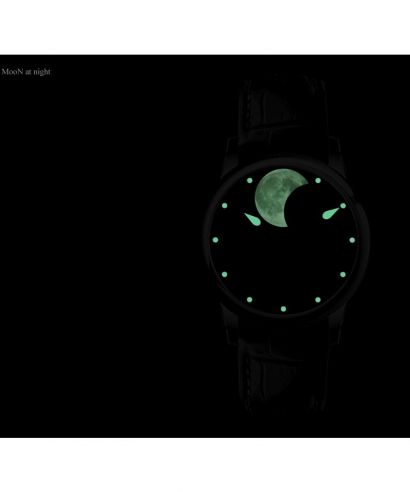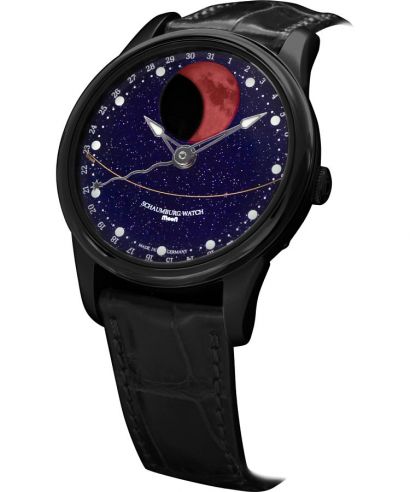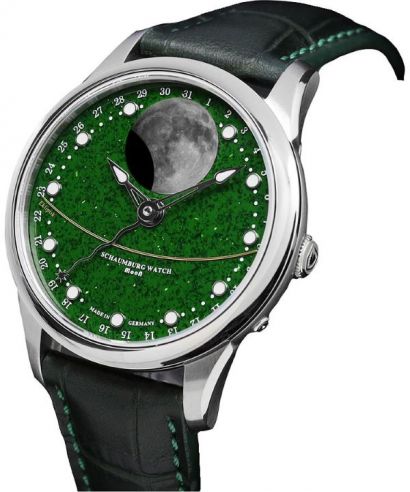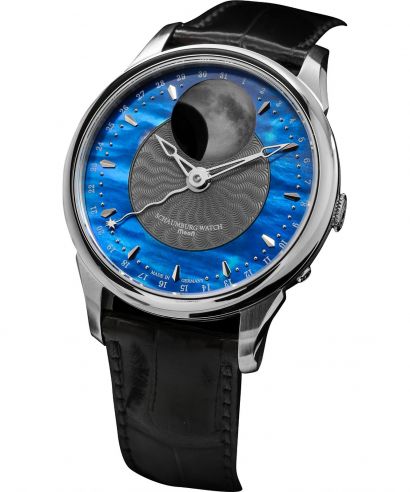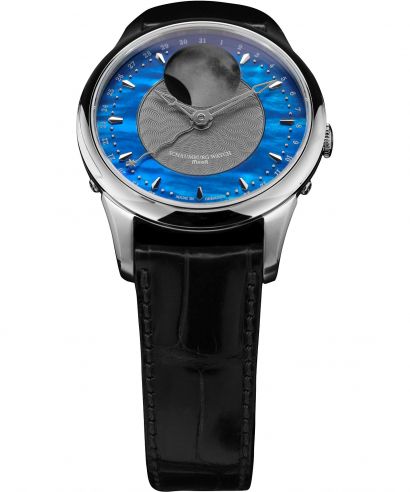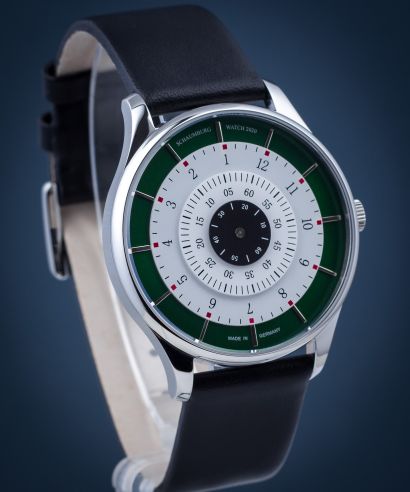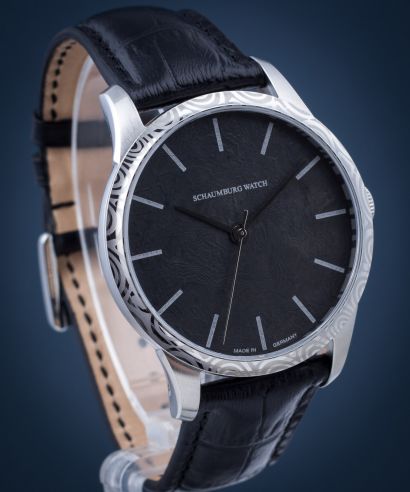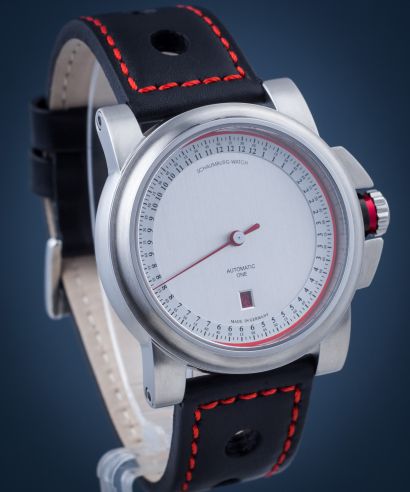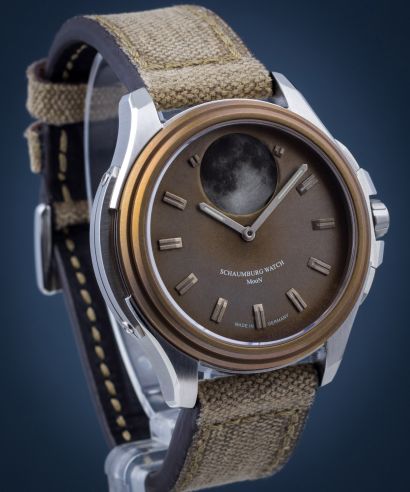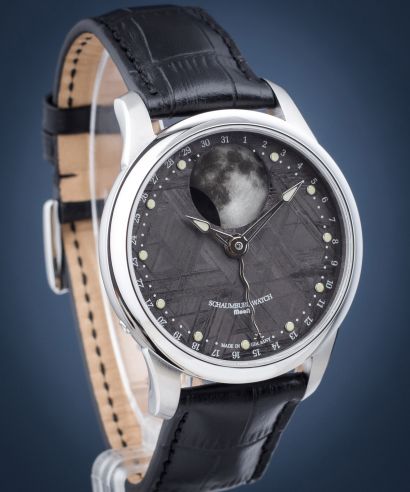
Schaumburg expands the MooN collection with a new watch featuring the planetary system

News
Schaumburg expands the MooN collection with a new watch featuring the planetary system

Introducing the latest addition to the Schaumburg MooN collection: the Galaxy Planetarium watch featuring the mesmerising moon shadow disk with the planetary system. Here's another launch where the manufacturer displays the exceptional craftsmanship of the dials. Discover luxury watches with goldstone dials and blue mother-of-pearl.
- The dial, together with the moon phase indicator, resembles a galactic nebula.
- Schaumburg uses a goldstone which poses a challenge to master in the manufacturing process.
- The moon phase indicator of the automatic Schaumburg watch stands out for remarkable precision.
- To learn more about watches, visit our blog!
Unique dial decoration of Schaumburg watches
The MooN Galaxy Planetarium features something completely new, namely the engraved moon shadow disk with the planetary system. Thanks to a unique heat treatment process, each model boasts captivating colours reminiscent of a galactic nebula. This also ensures that every piece is truly one-of-a-kind. The dial itself is crafted from goldstone (also known as aventurine glass), a mineral which also adorned Schaumburg watches. This stone earned its name due to its golden shimmer and its ability to transform into a liquid state under high temperatures. For the brand, the goldstone has become the primary material for the dials in the Galaxy & Signs of Zodiac dial collections. We have already witnessed its beauty in the Blood MooN Galaxy SCH-MNGB watch, featuring an enchanting image of the Blood Moon. Schaumburg is renowned for its remarkable dials, exemplified by timepieces like the Schaumburg MooN Aventurine SCH-MNAVE watch, featuring a vibrant green dial, and the MooN Nebula SCH-MNNU model, boasting an incredible blue mother-of-pearl dial.
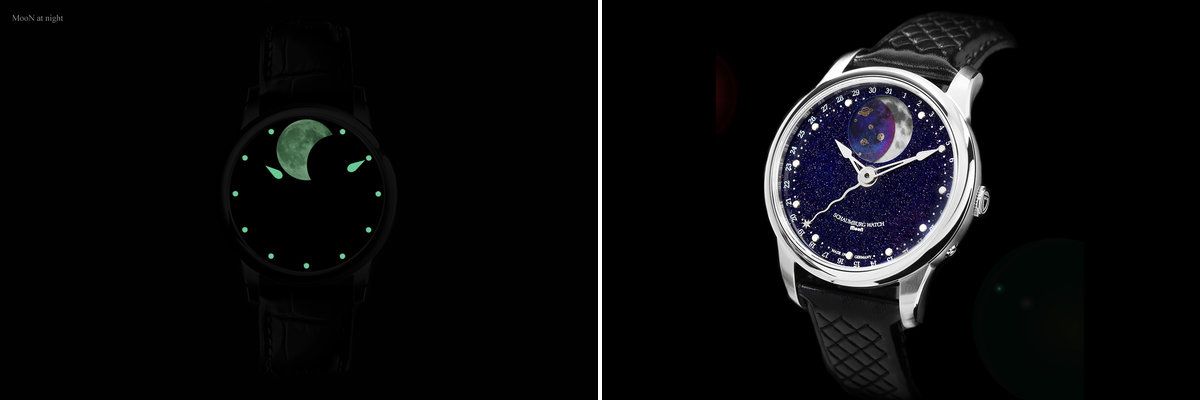
The most precise moon phase indicator
Schaumburg has always held a deep fascination for the ever-changing cycles of the moon. As part of their mission, the watch manufacturer aims to create a moon phase indicator that is not only incredibly realistic but also operates with exceptional precision. To achieve this, they are developing modifications to highly acclaimed movements like the SW-11, which is Swiss Made and used in the Galaxy Planetarium watch. The Schaumburg MooN series has already gained widespread recognition, not just for its remarkable design that portrays the moon's cycles in the Earth's northern and southern hemispheres with photorealistic precision, but also for the extraordinary movements that ensure a maximum deviation of the moon phase indicator of merely one day in 122.5 years.
